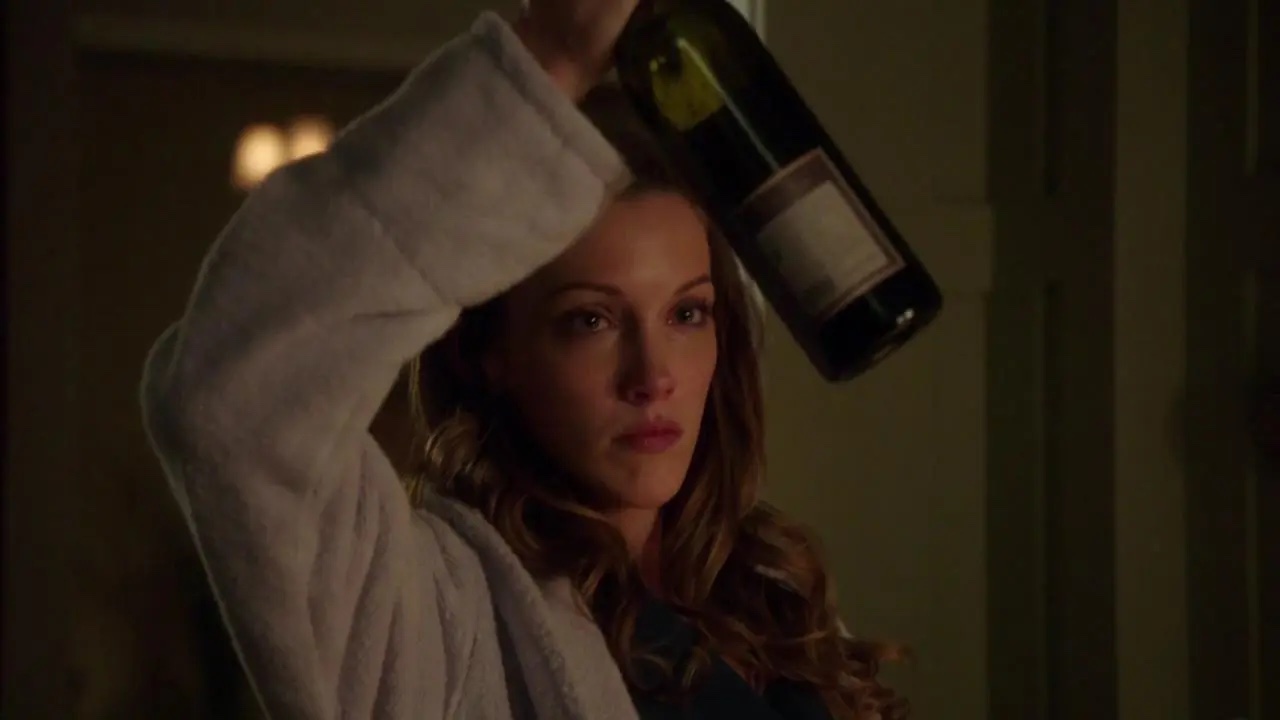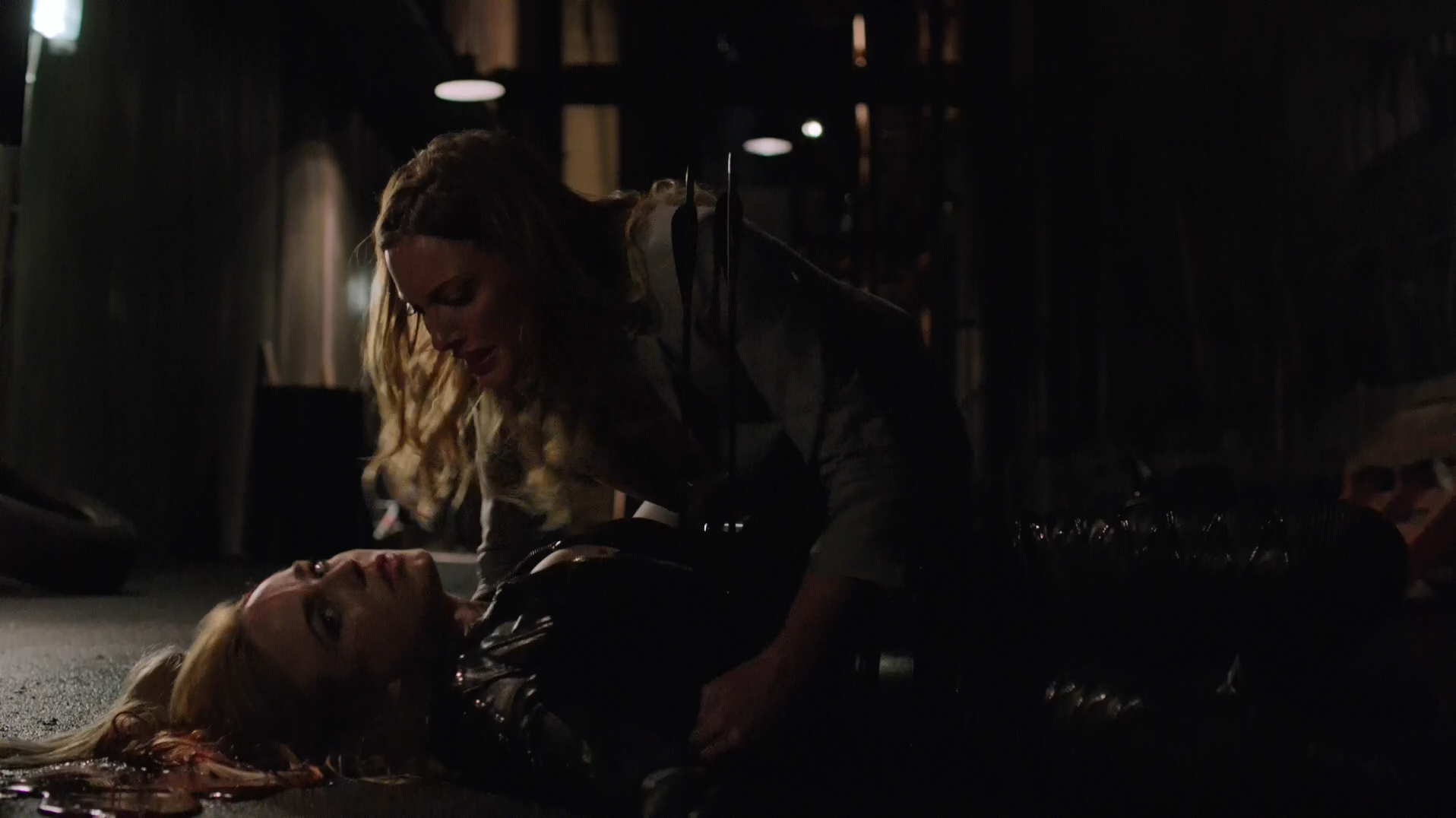I initially wrote this post for The Mary Sue for the Psychology of Inspirational Women panel. I’m reposting it here with permission.
The Background:
Black Canary is the alter ego of Dinah Laurel Lance, and was one of the first DC female superheroes, along with Wonder Woman. Black Canary’s initial name in DC comics was Dinah Drake, and in the later series the Black Canary was based on two separate people – mother (Dinah Drake) and daughter (Dinah Laurel Lance). In the comics Black Canary temporarily worked with the Justice League and also with Oracle (formerly, Batgirl).
In the TV show Arrow, the Black Canary is initially Sara Lance (Laurel’s sister) and later, Laurel Lance herself. Spoilers for Arrow follow!
In the beginning of the series, Laurel Lance was originally Oliver Queen’s girlfriend. The two were starting to get serious when Laurel suggested that they move in together. Oliver, the billionaire playboy with a long history of being arrested (at one point for urinating on a police officer) became scared of such a serious commitment and made a number of bad decisions, including getting another girl pregnant and cheating on Laurel with her sister, Sara. He even invited Sara on his father’s boat, the Queen’s Gambit.
When the boat sank due to a horrendous storm (as well as a premeditated sabotage), Laurel Lance, along with the rest of Starling City, was left to believe that both Oliver and Sara were killed at sea. As painful as it must have been to lose two of the people she loved the most, it must have also been extremely complicated for Laurel to process these feelings due to the circumstances of their deaths. Most accidental and tragic deaths are difficult to bear; however, when people grieve and connect with their natural feelings about the loss, they ultimately recover. When grief is further complicated by feelings of anger and betrayal, it can be a lot more difficult to process the loss, which can potentially make that individual more vulnerable to depression, anxiety, and substance abuse in order to numb the pain.
In Laurel’s case, it seems that, for the five years that she assumed both Sara and Oliver to be dead, she managed to become an attorney and use her pain to fuel her passion for justice. This is even more inspiring, considering how little support she had to help her with her loss. After Sara was presumed to be dead, Laurel’s mother left and her father began drinking, leaving the heartbroken Laurel alone with her grief. The only person who supported her and understood her pain, at least to some extent, was Tommy Merlyn, Oliver’s best friend. The two started seeing each other around the time Oliver returned from the island.
Laurel already seemed to have reservations about dating Tommy when she thought that Oliver was dead. Her grief combined with guilt about dating Oliver’s friend seemed to have held her back, coupled with her own fears of being cheated on by someone who, similar to Oliver, had a long history of partying hard. When Oliver returned, these feelings must have intensified. Seeing someone whom she emotionally buried, whom she loved, whom she hated, the person she blamed for taking her sister away from her, and for splitting up her family, was probably excruciating, not to mention overwhelming and confusing.
Laurel entered into a committed relationship with Tommy, but it did not last long. Jealous about Laurel’s remaining feelings for Oliver, especially when he found out that Oliver was the Arrow (or “The Hood”), Tommy broke up with Laurel. Laurel was devastated but in her cocktail of emotions ended up having steamy sex with Oliver, which Tommy witnessed outside of her window.
It was only a short while later that Laurel, feeling guilty and seemingly ashamed over her one night stand with Oliver wanted to smooth things over with Tommy. However, she didn’t really get a chance to do that. When Tommy’s father, Malcolm Merlyn, and his associates blew up the Glades (the impoverished area of Starling City, known for high crime), Laurel got trapped in the rubble and nearly died. Tommy rushed in to save her and ended up giving his own life to save hers.
Laurel was devastated. That’s an understatement.
She told her father, “[Oliver] told me to stay out of the Glades, and he–he told me to get out of CNRI, and I didn’t. Tommy was only there because I was too stubborn! Too stubborn to get out when I had the chance. You were right. I was blaming the Arrow because… Oh, my God. It’s all my fault, Dad. It’s all my fault that Tommy died.”
The Diagnoses:
Blaming herself for Tommy’s death, Laurel shut out anyone who tried to help her. She avoided her friends and family, she drowned herself in her work, and self-medicated with alcohol and prescription medication (which she stole from her father). She seemed to be struggling with a substance use disorder and major depressive disorder.

The first of these, Substance Use Disorder, is diagnosed when an individual continuously uses substances even though these actions might cause problems with their health, personal relationships, or work. Laurel, who ends up pushing away all the people closest to her and ends up losing her job, seems to meet the criteria for this disorder.
Major Depressive Disorder (MDD) is diagnosed if an individual has experienced the following symptoms for at least 2 weeks:
- Feeling sad, worthless, or guilty
- Having trouble enjoying things
- Feeling restless (or slowed down)
- Changes in energy levels
- Changes in weight or appetite
- Sleep changes
- Trouble concentrating
- Thoughts about death or suicide
Laurel does seem to meet most of these symptoms, enough to meet the diagnosis of MDD.
How are these disorders treated?
Not everyone with substance use disorder goes to AA (Alcoholics Anonymous)/NA (Narcotics Anonymous), and not everyone needs to. Many people are able to reduce substance use on their own, or with the help of a friend, family member, or a therapist. Everyone recovers differently – but the most important things that seem to be helpful are a supportive (as opposed to a critical) environment, and a sense of purpose.
The sense of purpose is also one of the key ingredients in treating depression. Most effective treatments for depression include teaching the individual to connect with the things that matter the most to them. When Laurel gets confronted by Sara, who is in disguise dressed as the Black Canary, she is able to remember what she stands for, enroll in treatment, and eventually get her life back, despite the fact that on more than one occasion her life was in danger (such as being kidnapped and nearly killed by The Dollmaker). These traumatic experiences clearly added to Laurel’s struggle, as she reminds her father, “I don’t know if you’ve noticed but I’ve had a little bit of a hard time lately. I was kidnapped, nearly murdered by a psychopath, and my boyfriend died.”
This was not an easy recovery, and it took a long time for Laurel to heal. Compounded with the loss she experienced when she believed Oliver and Sara to be dead, Tommy’s death was extremely difficult to handle, especially since she blamed herself for it. Interestingly, despite her experiences with The Dollmaker, and later Slade Wilson, Laurel did not seem to develop PTSD. Not everyone who experiences trauma develops PTSD and certain factors, such as having a support group, can make it less likely that the person will develop PTSD.
When Sara returned to Starling, and Laurel realized that she had been alive that entire time, she was furious with her sister. However, the two eventually worked things out and Sara was able to reconnect not only with Laurel but also with their parents.
As amazing and also complicated as Laurel’s reunion with her sister was, it was also extremely difficult for her when Sara was killed right in front of her.
This time there was no mistake. It was Sara. And she was dead.

Having grieved and buried Sara when she thought that her sister died at sea, Laurel seemed to actually have an easier time moving on from this loss. Of course she was devastated; however, she also seemed to feel different compared to when Tommy died. After Sara died, Laurel was not only grief-stricken, she also seemed empowered. She was angry but she was also ready to take a stand, ready to follow her purpose. She now seems to be trying to channel her pain to follow her values in protecting others. And in some way, this allows her to regain control, feel less powerless, and begin to heal.
Dr. Janina Scarlet is a Licensed Clinical Psychologist, a scientist, and a full time geek. She uses Superhero Therapy to help patients with anxiety, depression, chronic pain, and trauma at the Center for Stress and Anxiety Management and Sharp Memorial Hospital. Dr. Scarlet is also a professor at Alliant International University, San Diego. Dr. Scarlet has presented her work at professional psychological conferences, as well as a number of pop culture conventions, such as San Diego Comic-Con. She has authored and co-authored several books/book chapters, among them the upcoming Walking Dead Psychology and Star Wars Psychology.

I love this article! Black Canary is my favorite superhero and I love how complex her character is on Arrow. She’s been through so much already and she’s coming out as a very strong, independent woman. I’m glad the writers have put so many obstacles in her way and how she overcame them because in the end she is going to be a force to be reckoned with.
Aww, thanks so much, Ashley, this was such a joy to write. I agree, Laurel really has been through a lot and it’s inspiring how she’s able to turn her pain to becoming a superhero 🙂